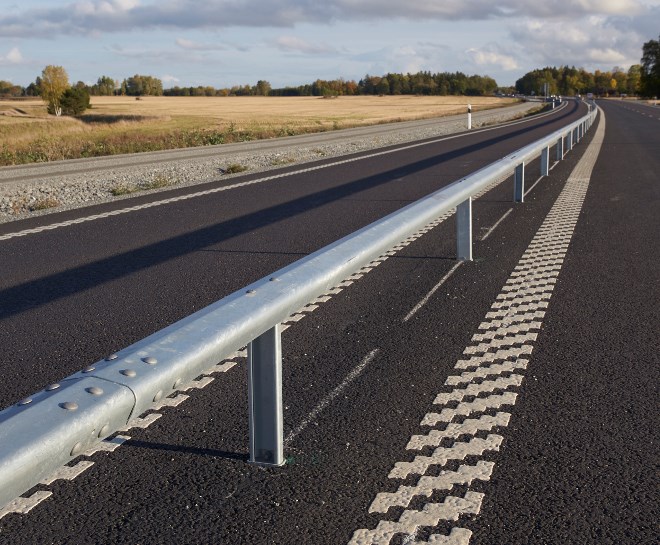A Northern Ontario driver is twice as likely to be killed in a crash as a driver from southern Ontario.
And if your vehicle is registered in the Temiskaming district, count yourself four times unlucky.
That grim comparative is part of the argument a road safety advocacy group is using to illuminate the need for a better engineered highway in northeastern Ontario.
The Going the Extra Mile for Safety Committee (GEMS) produced that gruesome statistic after combing through the Ministry of Transportation’s (MTO) annual road safety reports of highway deaths by district.
The group is an issue-based offshoot of the Temiskaming Shores & Area Chamber of Commerce.
For years, the chamber and other business groups have been calling for upgrades to the 380-kilometre stretch of two-lane between North Bay and Cochrane, which is part of the Ontario section of the Trans-Canada Highway.
Highway 11 has passing lanes in various spots, but not enough of them to prevent serious accidents and fatalities, said the chamber.
The highway, they claim, has ostensibly remained unchanged for the last 30 years, as it has become the preferred cross-Canada route for long-haul truckers.
The lack of improvements have contributed to fatalities from head-on collisions due to impatient drivers and unsafe passing, or single-vehicle run-offs related to driver fatigue or poor weather conditions.
The resulting highway closures has an adverse regional socio-economic impact; the elderly are leery about venturing out for long trips, timely deliveries to businesses are affected, then there’s the workplace safety aspect of putting professionals drivers at risk.
“When that road’s closed, it’s our lifeline for all of us up here and it affects our mobility,” said Mark Wilson, resource manager for the GEMS committee.
“There’s a fear of driving, particularly in winter, or any time of the year.
“The trucks are becoming more of an issue with no buffer zone (for oncoming traffic) on the centre line. People are not comfortable driving when going down for a medical appointment or visiting family.”
The MTO has told the Temiskaming chamber there’s no chance of four-laning the highway north of North Bay, based on existing traffic volumes.
So Wilson and the GEMS group are promoting a solution originating in Sweden called the 2+1 system, a configuration they’re touting as a “collision-free road.”
It’s basically a three-lane road with continuous, alternating passing lanes every two to five kilometres.
The oncoming lanes are separated with a centre line safety barrier of either wire cable or a steel guard rail. Reflectors on the barrier delineate the middle of the road at night or during whiteout conditions.
“The inappropriate passing that we see all the time on (Highway) 11 will be eliminated,” said Wilson.
Back in the 1990s, Sweden had a big problem with fatalities on its two-lane highways.
Since devising and implementing the 2+1 system in 1998, highway deaths have dropped 75 per cent over 20 years. It’s based on that country’s Vision Zero principle that better designed roads make for better drivers.
The design has since been adopted in Ireland, Denmark, Norway, Germany and Finland.
Wilson went on a fact-finding trip to Sweden and Ireland early last summer to meet with government officials and view the 2+1 system in action. He returned to the Scandinavian country last December to observe the roadways under winter conditions.
“The system works very well, regardless of the season.”
Wilson firmly believes 2+1 is a good fit for Northern Ontario.
“When you see it in countries like Sweden, it’s a very similar road platform, similar geography and climate and, ultimately, the results have been tremendous when you look at the prevention of fatalities and serious injuries as well as the comfort that it provides drivers.”
Construction costs for 2+1 highways in Europe are generally 70 to 75 per cent cheaper per kilometre than conventional four-lane highways.
He’s posted his report and all the background material on the chamber’s website.
Wilson and the GEMS committee expect to have a full discussion on 2 +1 during a meeting with MTO officials in early April.
The MTO has his research and have hired an engineering consultant to review his findings and prepare a report on their own, listing any anticipated technical issues.
“We can’t ask for much more,” Wilson said. “We’re an advocacy group; we’re not engineers.”
The GEMS group wants the province to road-test this concept with a Highway 11 pilot project over a 20-kilometre length of road.
“A pilot project would be a great way to see how it works and see what effect it can have,” said Wilson, “and for the ministry to figure out how it would work from an engineering and standards point of view. You don’t know until you actually try it.”
He’s hopeful the outcome of the MTO meeting will spur more discussion to see if it’s feasible to implement 2+1 elsewhere in Northern Ontario. At the same time, the group plans to work the political angle at Queen’s Park.
With the backing for 2+1 from more than 20 area municipalities, Wilson said: “I don’t think anybody (we’ve talked to) has said this is a bad idea.”
He’s unaware if any 2+1 examples exist in North America, though some highways in Québec and the U.S. have variations of alternating passing lanes, but without the safety barriers.
“When I was in Sweden, driving through some particularly snowy weather, it was interesting in going from a regular two-lane road to some sections of 2+1,” said Wilson.
“Two-plus-one gives you that extra level of security and comfort while driving, and it has some tremendous results.”




